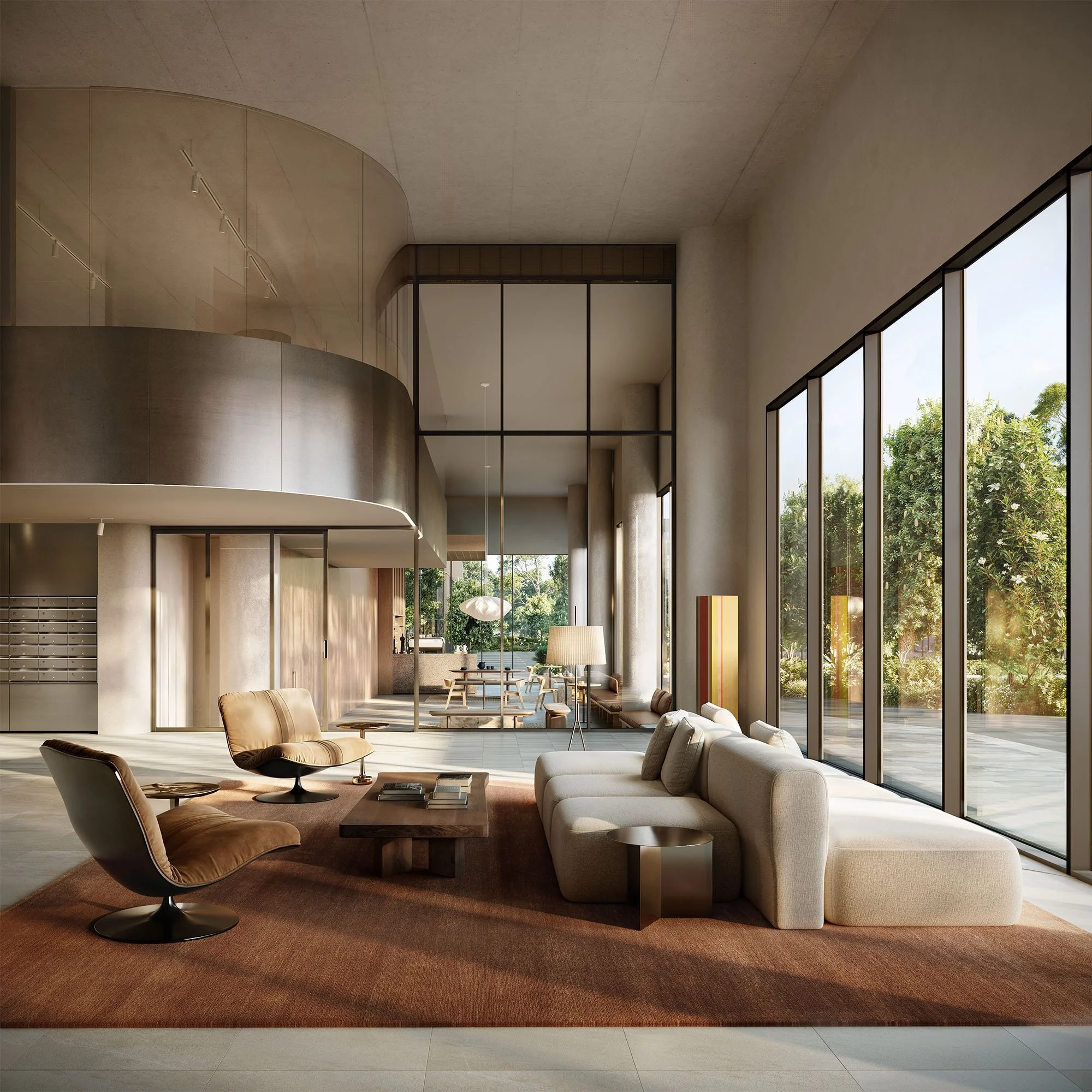Melbourne residential projects: world-class amenities, smarter value, and a market turning a corner
Melbourne’s newest residential projects are redefining amenity-rich living—combining big-city culture with thoughtful, day-to-day convenience. A standout example is R.Evolution by R.Corporation in South Melbourne, the second tower to the landmark R.Iconic precinct. Beyond stylish 1, 2 and 3-bedroom residences, R.Evolution layers in a lifestyle ecosystem: 24/7 concierge and security, co-working spaces, EV charging, parcel lockers, a building app, dog spa, and even direct lift access to Coles Local and Liquorland—amenities curated across Wellness, Entertainment and Convenience to make daily life frictionless.
Artist’s impression of the lobby of R.Evolution by R.Corporation
How Melbourne differs from other states
Compared with Sydney, Brisbane and Perth—where apartment markets have recently outpaced houses in many suburbs—Melbourne’s relative affordability and continuous delivery of new homes create a distinct value proposition. That supply has kept prices more accessible while still supporting vibrant, high-amenity precincts close to jobs, universities and the CBD. Meanwhile, other capitals have seen apartment prices surge faster as they pivot back to high-rise living.
Policy settings are another difference. Victoria’s recent tax mix (including investor-targeted measures and short-stay levies) has reshaped demand, tilting opportunity toward owner-occupiers and first-home buyers and contributing to Melbourne’s improved affordability relative to other capitals. This stands in contrast to states where investor momentum has been stronger and supply scarcer.
Who wants to live—or invest—here?
Young professionals & students: Proximity to the CBD, universities and transport, with co-working, wellness facilities and retail at the door, supports flexible, car-lite living. Projects like R.Evolution excel here by blending private space with hotel-style services.
Rightsizers & lifestyle seekers: Lock-and-leave convenience, concierge services, and comprehensive security make inner-Melbourne towers attractive for downsizers who still want theatres, galleries and dining minutes away.
Yield-focused investors: With national unit markets strengthening and Melbourne’s rental demand buoyed by migration and education, modern amenity sets help reduce vacancy risk and support rentability—especially in branded precincts with retail and transport embedded.
Amenities that move the needle
The amenity arms race is real—but Melbourne’s edge is practical, everyday utility layered with wellness: concierge, monitored security, co-working, EV charging, share cars, dog spa, and lift-to-retail make vertical living genuinely easier, not just flashier. These features help projects stand out in leasing campaigns and resale, broadening appeal across demographics.
Market outlook: cautiously upbeat
After lagging other capitals through the pandemic and subsequent policy shifts, Melbourne has become one of the nation’s more affordable major markets—a base from which recovery is building. Independent forecasters and media analysis point to stability through late 2025 and the potential for nation-leading growth in 2026 as affordability, population inflows, and easing rates align. For investors and owner-occupiers, that sets up a window where high-spec projects purchased today may ride the next upswing.
Docklands and waterfront view
Bottom line
If you’re comparing Australian capitals, Melbourne offers the strongest mix of big-city culture, thoughtful amenities, and price accessibility—especially in next-generation precincts like R.Evolution that integrate retail, wellness and work-from-home solutions. For professionals, downsizers and investors seeking long-term livability and resilient demand drivers, Melbourne’s amenity-rich projects deliver compelling value today with credible upside ahead.


